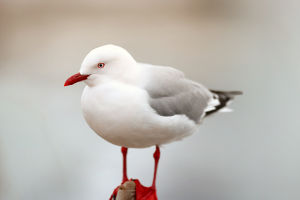The tricolor angelfish, also known as the koi or goldfish, is a tropical fish that is highly regarded for its vibrant colors and ornamental value.
Features:
1. Colorful Varieties: Tricolor angelfish exhibits vibrant colors, with red, white, and black being the predominant hues.
Their bodies are plump, adorned with evenly distributed patches of color.
2. Diverse Varieties: Through selective breeding, various tricolor angelfish varieties have been developed, including red and white angelfish, red and black angelfish, and red, white, and black angelfish.
3. Moderate Size: Typically, tricolor angelfish grow to a length of 10-15 cm, making them suitable for medium-sized aquariums.
Feeding Guidelines:
1. Water Quality Management: Tricolor angelfish are highly sensitive to water quality and require a clean and stable aquarium environment.
Regular water changes, along with the use of filtration equipment and appropriate water conditioners, are essential.
2. Optimal Temperature: As tropical fish, tricolor angelfish thrive in water temperatures ranging from 24 to 28 degrees Celsius.
It is important to maintain a stable temperature by using heating equipment.
3. Diverse Diet: Provide a varied diet for tricolor angelfish, including fish food, freeze-dried worms, and live small invertebrates.
Avoid overfeeding, as it can lead to poor water quality and obesity.
4. Hiding Spots: Create suitable hiding spots within the aquarium, such as aquatic plants and stones, to allow the angelfish to seek refuge and rest.
It is worth noting that the tricolor angelfish hold special symbolic significance in Chinese culture, representing good fortune, wealth, and longevity. They are commonly found in decorative ponds within courtyards, serving as auspicious symbols.
Breeding:
Breeding tricolor angelfish is a relatively straightforward process, although it requires some preparation and specific conditions.
Here is a general outline of the breeding process:
1. Pair Selection: Choose healthy, mature male and female angelfish for breeding.
Males can be identified by their larger size and longer fins.
2. Preparation: Create an appropriate breeding environment, ensuring suitable water temperature, stable water quality, and adequate hiding places within the aquarium for the hatching of eggs and the growth of juveniles.
3. Spawning: Female angelfish lay their eggs in a suitable environment, often on plant leaves or other surfaces within the aquarium.
Males guard the eggs to ensure their safety.
4. Hatching: Eggs typically hatch within 2-7 days, with the juveniles attaching themselves to surfaces using their adhesive glands.
Maintain stable water temperature and quality during the incubation period and avoid excessive disturbance.
5. Juvenile Care: After hatching, female angelfish usually continue to guard the juveniles, while males remain vigilant.
Provide a suitable environment and appropriate nutrition for the healthy growth of the juveniles.
It is important to note that the successful breeding of tricolor angelfish requires experience, knowledge, and the provision of suitable environmental conditions.
For those interested in breeding these fish, further research and consultation with experienced breeders or professionals are recommended.
Lifespan and Care of Angelfish:
Under proper care, tricolor angelfish can live for several years.
These fish are highly sensitive to water quality and temperature, so it is crucial to maintain appropriate conditions.
Care Considerations:
Regularly monitor water quality and perform necessary maintenance, including cleaning and water changes.
Keep the water temperature stable using heating equipment and thermometers.
Provide an adequately sized aquarium to accommodate the angelfish's need for space and swimming.
Offer a balanced diet, avoiding overfeeding to prevent obesity and water quality issues.
Observe the behavior and appearance of the fish, promptly addressing any signs of illness or injury.
By following these guidelines and providing appropriate care, you can ensure the health and longevity of your tricolor angelfish.


